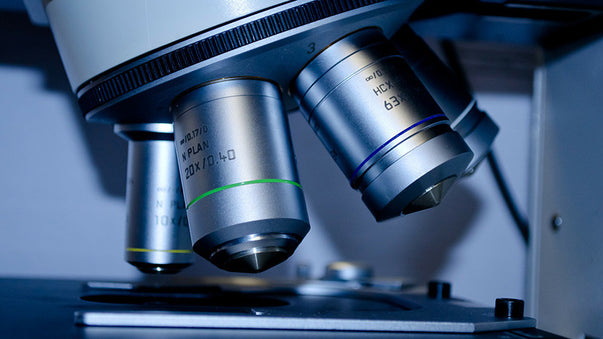Zika Virus and Implantable Chips for the Brain

It appears that the Zika virus could be instrumental in fighting glioblastoma, the most common and aggressive brain cancer, and a research team in the UK recently received a grant to investigate further.
This development, and the hypothetical possibility to use viruses found in nature as weapons against cancer, is totally fascinating. It seems odd that the incidence of cancer in the modern world seems to be higher than at the time of our grandfathers. Sensible explanations have been proposed, but sometimes I think that modern medicine could have eliminated viruses that used to fight cancer naturally in the past.
Another very interesting development is the announcement, by chip maker ARM and the Center for Sensorimotor Neural Engineering (CSNE) at the University of Washington, of a joint research program to develop bi-directional interface chips for brain implants.
It’s not surprising that the official announcements emphasize the potential therapeutical aspects of the project. “The research project will enable us to begin solving real world health problems with brain-implantable chips aimed at tackling a raft of debilitating neurodegenerative diseases, including Parkinson’s disease, Alzheimer’s disease and even paralysis,” notes the ARM press release. “The long-term goal is to assist people affected by neurological conditions, by engineering neurotechnology that will help the body heal, feel and move again.”
However, a commentary published in MIT Technology Review is quick to point out that the ARM project could have other long-term goals, related to Elon Musk’s and Mark Zuckerberg's visions of a future in which brain implants enhance human intelligence and make us effectively telepathic, as covered in recent issues of Pulse. “It’s currently unclear how far ARM’s ambitions might stretch beyond its stated aims, or whether it intends to get caught up in the techno-utopian visions of Musk and Zuckerberg,” concludes the MIT Technology Review article.
In fact, it seems evident that no solid line can be drawn between brain implant technology applications to therapy and enhancement, which are really two aspects of the same thing.
Kudos to Northwestern University, featured in three of the six news summaries below.
Could the Zika virus destroy brain cancer cells? UK scientists investigate. Scientists at the University of Cambridge have received a Cancer Research UK Pioneer Award to test the effect of the Zika virus on glioblastoma, the most common and aggressive brain cancer. The virus attacks stem cells in the developing brains of babies, but has no major impact on fully developed adult brains. In glioblastoma, the cancer cells resemble those in the developing brain. Therefore, it makes sense to speculate that the Zika virus could attack glioblastoma cancer cells, and the Cambridge researchers will investigate this hypothesis.
Gold nanoparticles and spherical nucleic acids against brain cancer. Researchers at Northwestern University have developed a brain cancer drug using spherical nucleic acids. The drug, which according to its developers represents a revolutionary new class of drugs, consists of short snippets of RNA densely arranged on the surface of spherical gold nanoparticles, and has been shown to work in lab mice. The FDA has approved the drug for use in an early-stage clinical trial at the Comprehensive Cancer Center of Northwestern University and Northwestern Medicine, for patients with glioblastoma multiforme, a deadly form of brain cancer.
3D-printed bioprosthetic ovaries that work. Researchers at Northwestern University have developed 3D-printed ovaries that actually ovulate when implanted. The study, conducted at the Feinberg School of Medicine and McCormick School of Engineering at Northwestern, and published in Nature Communications (open access), shows that bioprosthetic ovaries, constructed of 3D-printed scaffolds that house immature eggs, have been successful in boosting hormone production and restoring fertility in lab mice. Contrary to most current research news, this has been amply covered by press and media.
Steroids could repair and improve damaged muscles. Scientists at Northwestern Medicine have found that weekly doses of glucocorticoid steroids, such as prednisone, help speed recovery in muscle injuries and repair muscles damaged by muscular dystrophy. The study, published in Journal of Clinical Investigation, shows that steroid treatment, given weekly to lab mice, improved muscle performance and helped injured muscles heal faster, accelerating repair in the muscle cells. The scientists are now planning clinical tests with human patients suffering from forms of muscular dystrophy in which steroids would not normally be given.
Lab-grown blood stem cells developed for the first time. Two research teams of scientists, at Boston Children’s Hospital in Massachusetts and Weill Cornell Medical College in New York, have transformed mature cells into primordial blood cells that regenerate themselves and the components of blood, Nature News reports. The two studies, both published in Nature (1 | 2), offer hope to patients who need bone-marrow transplants but can’t find a compatible donor. These patients could, once preliminary lab research becomes clinical practice (which, of course, takes some time), receive lab-grown versions of their own healthy cells. “This is the first time researchers have checked all the boxes and made blood stem cells,” notes an independent reviewer.
ARM developing bi-directional interface chips for brain implants. Chip maker ARM and the Center for Sensorimotor Neural Engineering (CSNE) at the University of Washington have established a partnership to develop a unique ‘brain-implantable’ system-on-a-chip (SoC) for bi-directional brain-computer interfaces (BBCI). A CSNE post notes that the collaboration is generating interest in the media, including articles in BBC News, Fox News and Business Weekly. The new BBCI SoC will decode and digitize the complex signals formed within the brain, thus allowing scientists to process brain signals and act upon them. Brain-implantable chips need to be very small and highly power-efficient, and here’s where ARM’s expertise, and their industry-proven ARM Cortex-M0 processor, the smallest ARM processor available, are expected to play an important role.
More Articles
Don't miss a beat! In our Pulse Newsletter, Thrivous curates the most important news on health science and human enhancement, so you can stay informed without wasting time on hype and trivia. It's part of the free Thrivous newsletter. Subscribe now to receive email about human enhancement, nootropics, and geroprotectors, as well as company news and deals.
Read more articles at Thrivous, the human enhancement company. You can browse recent articles in Thrivous Views. See other Pulse Newsletter articles. Or check out an article below.
-
Interview with Dr. Cory Funk, Thrivous Science Advisor
When Lincoln suggested to start interviewing Thrivous’ scientific advisors, I jumped on board to learn more about nootropics, and share ...
-
Cancer Biochemistry and Medical Cannabis
There is no overall central theme in last week’s health and human enhancement press headlines, but many interesting advances scattered ...


